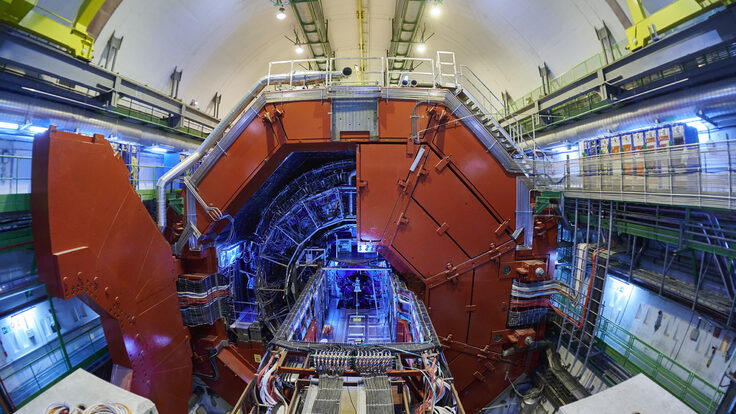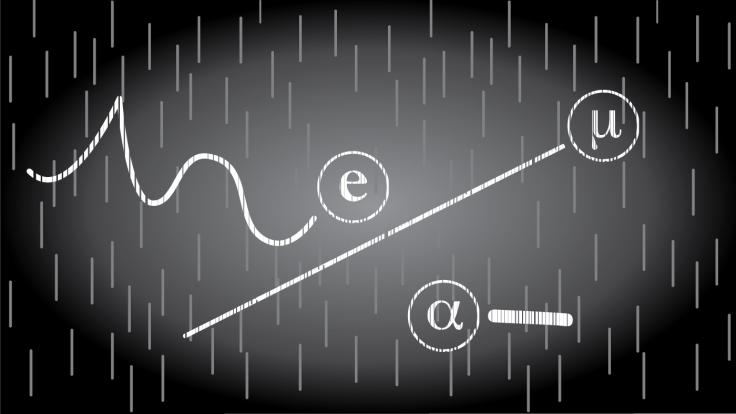Deconstruction: Large Hadron Collider
In pursuit of some of the most exciting science of our time, the Large Hadron Collider has pushed the boundaries of technology and the scale of science experiments to new extremes.
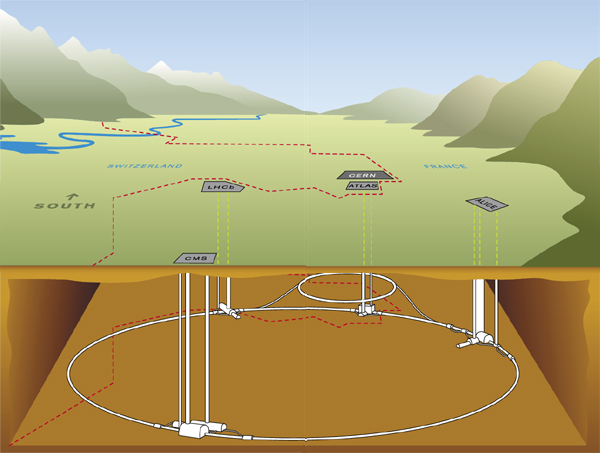 |
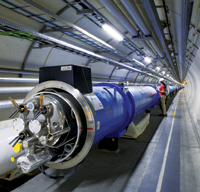 |
Circumference
26,659 meters
Particles accelerated
Protons and heavy ions of lead
Maximum beam energy
7 tera-electronvolts (TeV), or 7x10 12 electronvolts, per proton. All protons combined will have an energy equivalent to a person in a 1500 kg vehicle driving at about 25,000 km per hour.
Total number of magnets
Approximately 9300; number of large dipole magnets, which steer the beam around the ring: 1232. Each dipole magnet (photo to the right) is 14.3 meters long and weighs around 35 tons.
Magnetic field
8.33 Tesla, or about 200,000 times the strength of the Earth's magnetic field, at beam energy of 7 TeV.
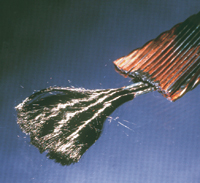 |
Super cold
The LHC will operate at 1.9 Kelvin (about 300 degrees Celsius below room temperature), colder than outer space. The beampipe's ultrahigh vacuum of 10-10 Torr (about 3 million molecules per cm3 ) is approximately equivalent to the vacuum pressure at an altitude above Earth of 1000 km. For comparison, the International Space Station's orbital altitude is 380 km.
Super conducting
The total length of the superconducting wire for the LHC, the world's largest superconducting installation, is 250,000 km, enough to go 6.8 times around the equator. It consists of 6300 strands of niobium-titanium filaments, embedded in copper (photo right). Each filament is about one tenth of the thickness of a human hair. When ultracold, the wire conducts electricity without resistance.
Super fast
At their top energy of 7 TeV, the particles in the LHC will travel at 0.999999991 the speed of light. Each proton will travel around the 27-kilometer ring 11,000 times per second. Collisions will occur so often (up to one billion times a second) that particles from one collision will still be traveling through a detector when the next collision happens at the detector 's center.
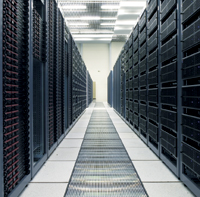 |
Super computing
The LHC experiments together will generate more than 10 million gigabytes of data every year–a stack of CDs 20 km high. LHC scientists have created a grid computing system in which more than 100 small and large computing centers share the responsibility for storing, processing, and analyzing the data. PC farms such as this one at CERN (photo right) will provide the computing power.
Control room
The CERN Control Centre (photo bottom right) combines the control functions for the accelerators, the cryogenic system, and the technical infrastructure. It has 39 work places.
Main experiments
ATLAS 1800+ members from more than 150 universities and laboratories in 35 countries. The ATLAS cavern could hold the nave of Notre Dame Cathedral.
CMS
2000+ members from 180 institutions in 38 countries. The CMS magnet is the largest solenoid ever built, and has a maximum field strength of 4 Tesla–approximately 100,000 times the strength of the Earth's magnetic field.
 |
ALICE
1000+ members from 98 institutions in 29 countries. The ALICE Time Projection Chamber, a cylinder 5 meters in diameter and 5 meters in length, has approximately 560,000 read-out channels.
LHCb
550+ members from almost 50 institutions in 15 countries. The LHCb experiment searches for CP-violation, the asymmetry in the behavior of matter and antimatter, in B mesons.
Text: Ben Berger; CERN Web pages
Graphic and photos: CERN
Click here to download the pdf version of this article.



